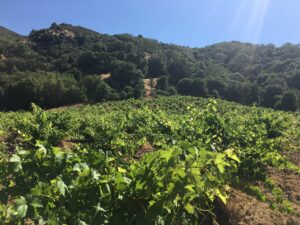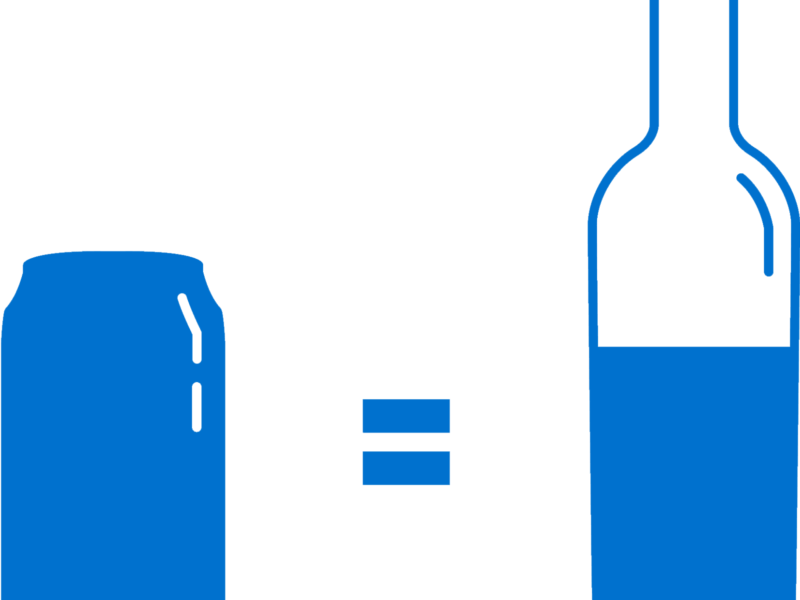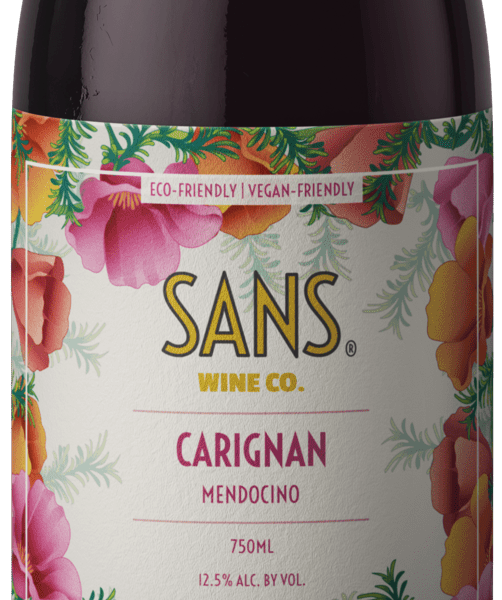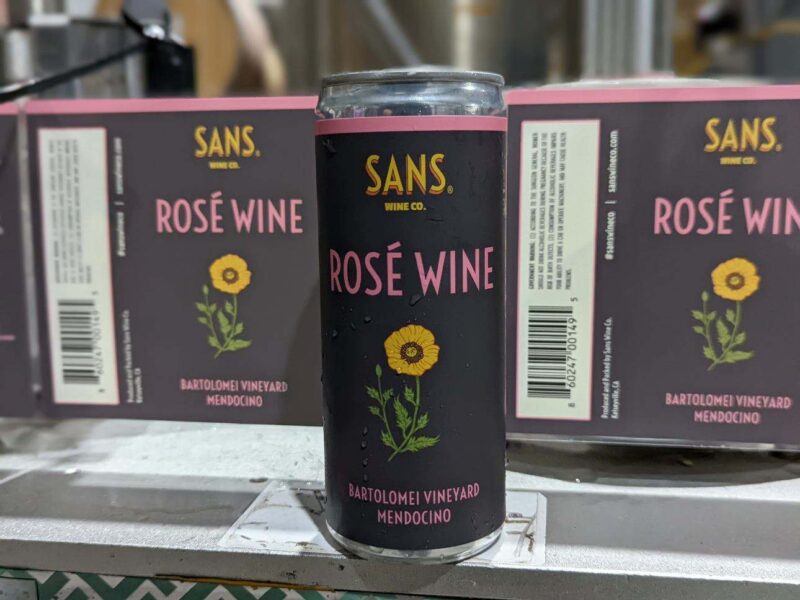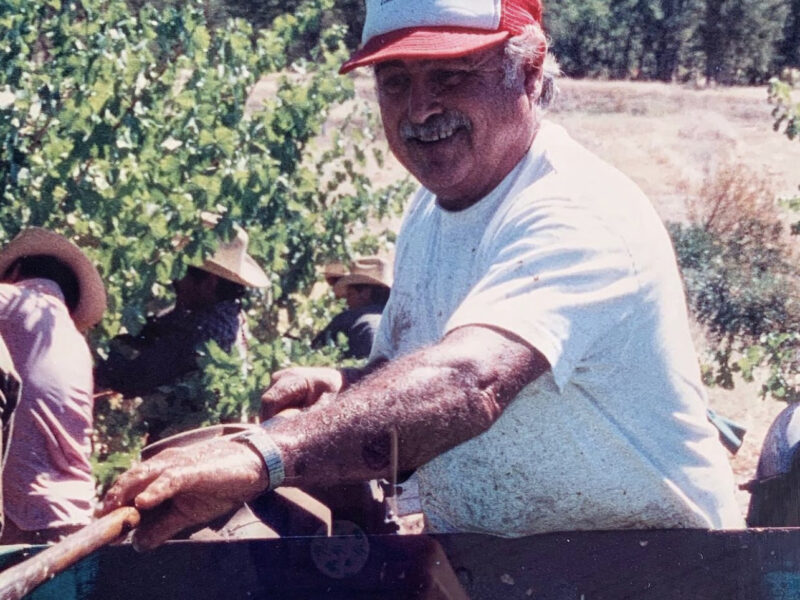
Dry Farming
Dry Farming
In late March 2022, California Governor Gavin Newsome signed an Executive Order related to water wells for agricultural purposes. This order makes it a little more difficult to drill new wells by requiring examination of the impact on groundwater management, neighboring wells, and proof a new well won’t cause ‘subsidence’ prior to permit approval. Most crops in california are irrigated and so this new order has some farmers on edge. Premium wine grape farming, I believe, has the potential to do its part for California, the environment, and addressing drought issues by using less water.
At Sans Wine Co., we seek out old-vine dry-farmed vineyards from which to source our fruit for the purposes of making our wine. You may be wondering why we prefer it over irrigating vines. There are several reasons why we prefer the fruit from vineyards that are dry-farmed. Firstly, we believe the quality of the fruit from vineyards that are dry-farmed is better because the vine must establish a stronger root system and reach further into the ground to access water later in the growing season. In our opinion, this helps us craft wines with the potential of having additional concentration and minerality that are expressed as secondary and tertiary flavors, as opposed to just primary flavor profiles. Secondly, we believe irrigation can create the necessity for additional inputs during the growing season. Fertilizer, extra labor or mechanical passes, and spray applications can be the result of utilizing too much water while cultivating grapevines. Thirdly, we believe there is an overall environmental benefit to dry farming. Saving water, preventing erosion, and minimizing the use of plastics in the construction and maintenance of vineyards are just some of the reasons dry farming is environmentally more friendly than irrigation and conventional farming practices.
Quality
Assessing wine quality will forever be a subjective endeavor. That being said, we like to think we can taste a wine that has soul. A vineyard that struggles to find its place in the world, that has to plant its roots deep into the soil, that receives water only when it rains, and that finds nutrients or lack thereof in its surroundings naturally, often makes a much more interesting wine than a vineyard that has everything handed to it 🙂 In all seriousness, we truly think irrigated vineyards tend to have more shallow root systems and require much more fertilizer in order to ripen their fruit. Dry-farmed vineyards overall have deeper root systems, are less vigorous (carrying less fruit) and later in the season reach deeper into soils creating more complexity and concentration of flavors in the resulting wine.
Inputs
Excessive irrigation and for that matter, chemical inputs (fertilizer, chemical sprays) results in higher yields in grapevine vineyards to the detriment of vine health, and in our opinion wine quality. We operate under a theory, based on our years of farming and making wine and through conversations with countless winegrowers, that extremely vigorous vineyards require more labor, spray applications, and irrigation in a self-perpetuating cycle that constantly requires additional inputs for the vineyard to fully ripen its fruit load. According to research from the University of California at Davis, it takes approximately 300 gallons of water to make one gallon of wine. 99% of this water is used in irrigating vineyards. On average wine grape farmers use 1/3 of an acre foot of water per acre every year. This is the equivalent of approximately 108,000 gallons of water per acre of vines. One of the vineyards, that we source from, has over 80 acres under vine and saves close to 1,000,000 gallons of water annually, by not irrigating. They also save on infrastructure, and chemical inputs, both economically and environmentally.Conventionally farmed vineyards in a commercial setting are typically torn out and replanted after 20 to 25 years. This is due to the inability after that time to maintain high yields, eventually the vines can no longer take in more fertilizer and water therefore it is no longer economically viable to maintain. The cycle of farming through chemical inputs and replanting often, is way more costly, but also requires countless more labor hours and the unnecessary use of energy to farm. It is easy to see that a dry farmed vineyard planted in 1943, as is the case with some of our Poor Ranch fruit, that has been farmed organically and without the use of: fertilizers, the use of irrigation, and has never been replanted, has a way lower carbon footprint than your typical commercial conventional vineyard. This ranch has seen much more consistent yields over an 80-year period and is economically more sustainable.
Environmental Impact
Dry farming vineyards in combination with cover crop maintenance result in less vigorous vines (less labor, mechanical, or chemical inputs), better soil health, and does not require expensive infrastructure made from plastics. These vineyards are better at sequestering carbon then their conventional counterparts, they cost less to maintain, they use fewer natural resources, they prevent soil erosion, and they don’t need to be torn out every 20 years. Not only are old-vine dry-farmed vineyards a piece of California and American history worth heralding (check out the Historic Vineyard Society to learn more about old vine preservation), but the wines they produce also tend to have more complexity and are better for the environment. Although it’s easy to see why a commercial operation would utilize irrigation to maintain consistent high yields of grapes, it comes at the price of environmental health and we believe is not economically as sustainable as farming without the use of irrigation. Get down with dry farming!
-Jake
